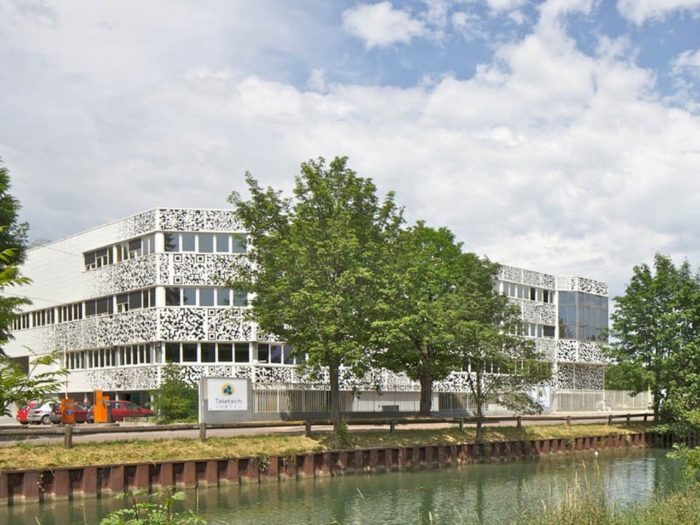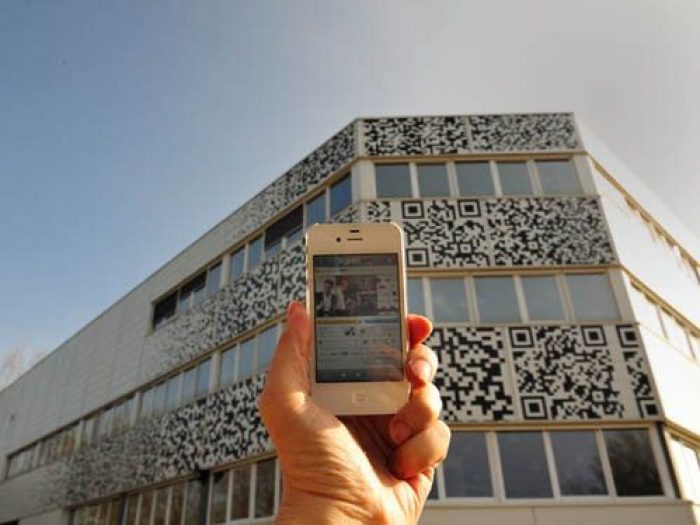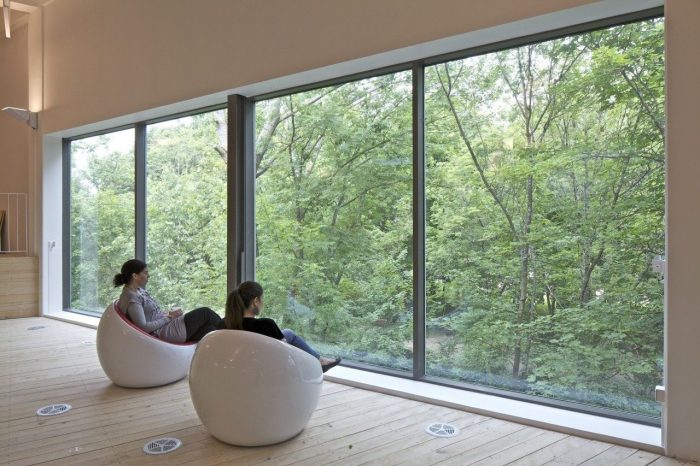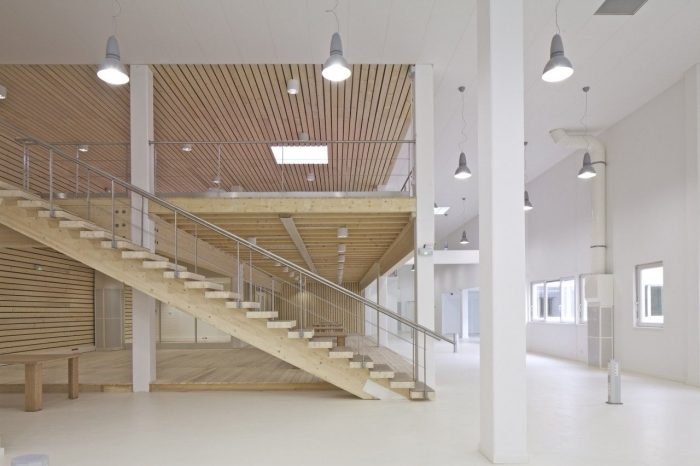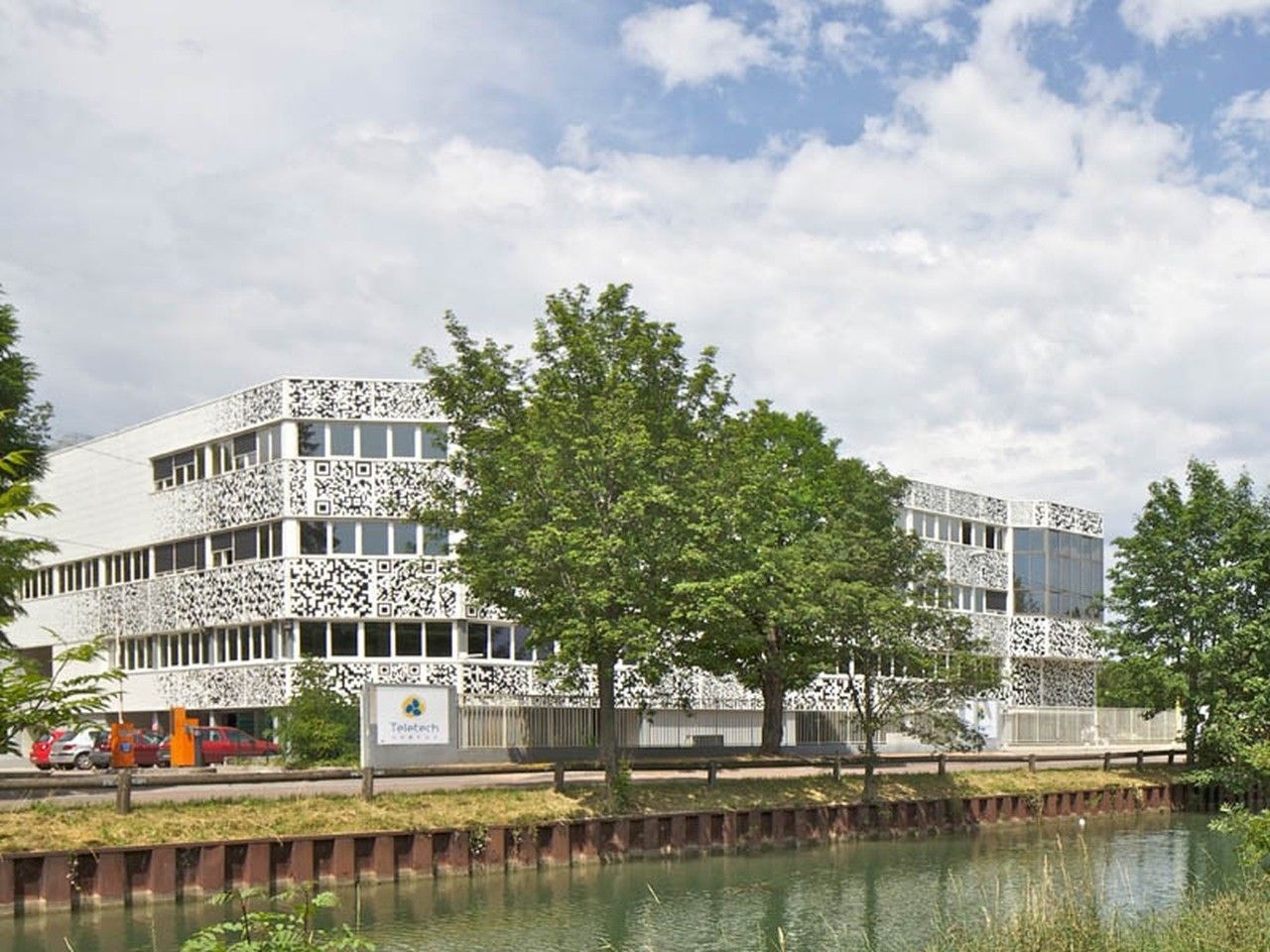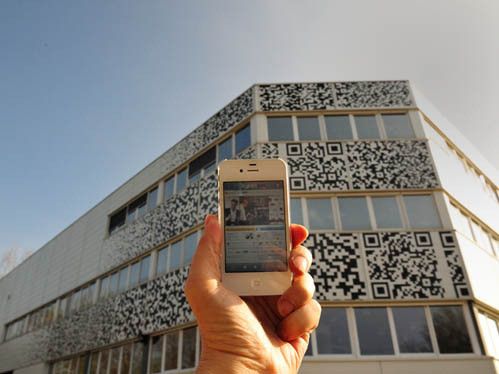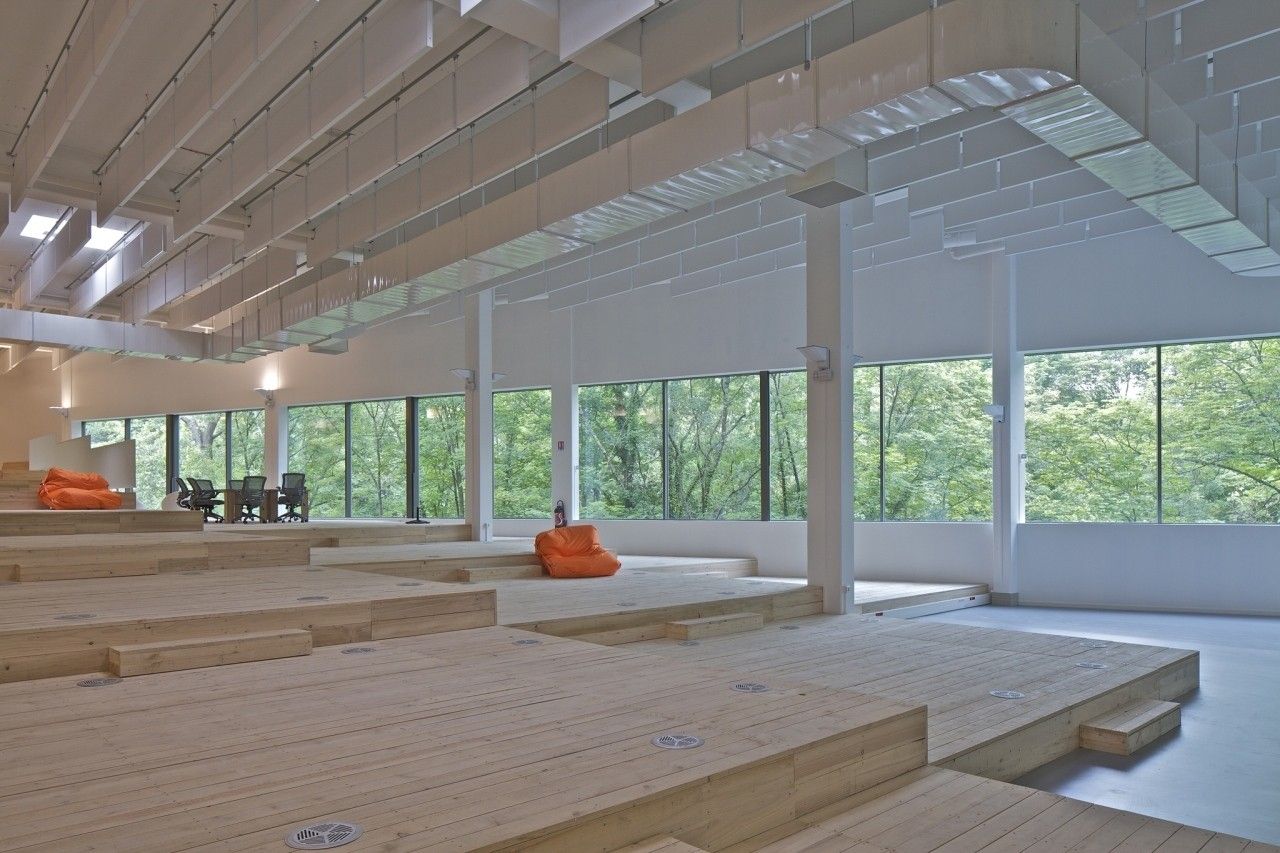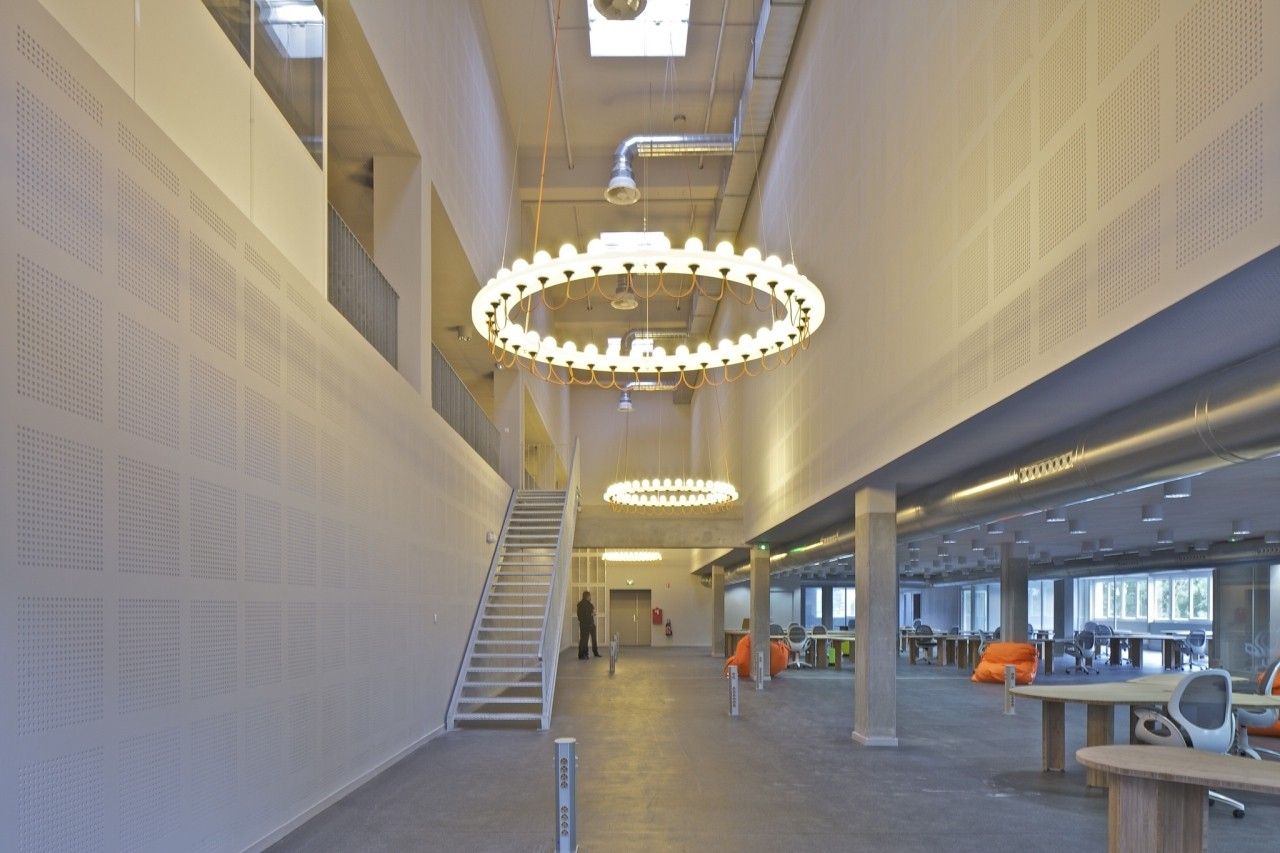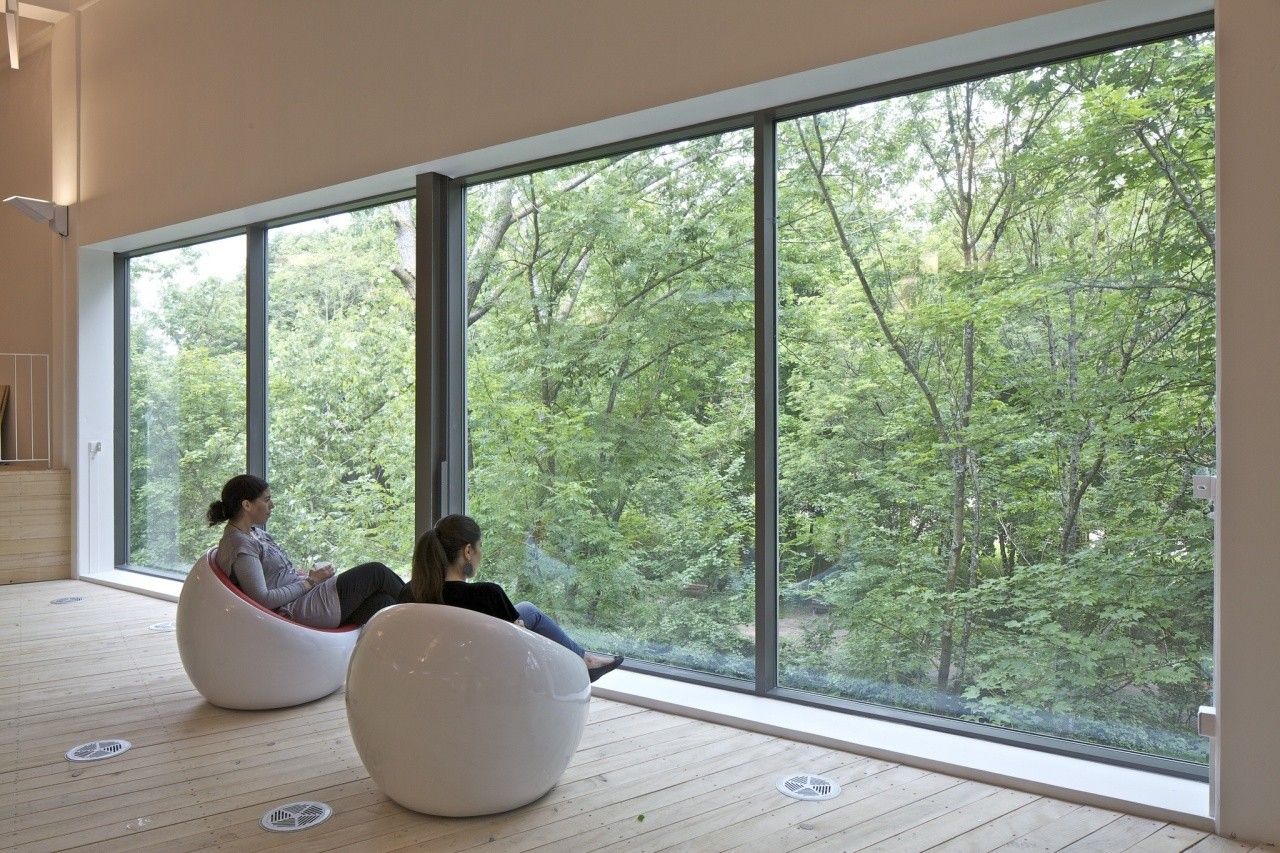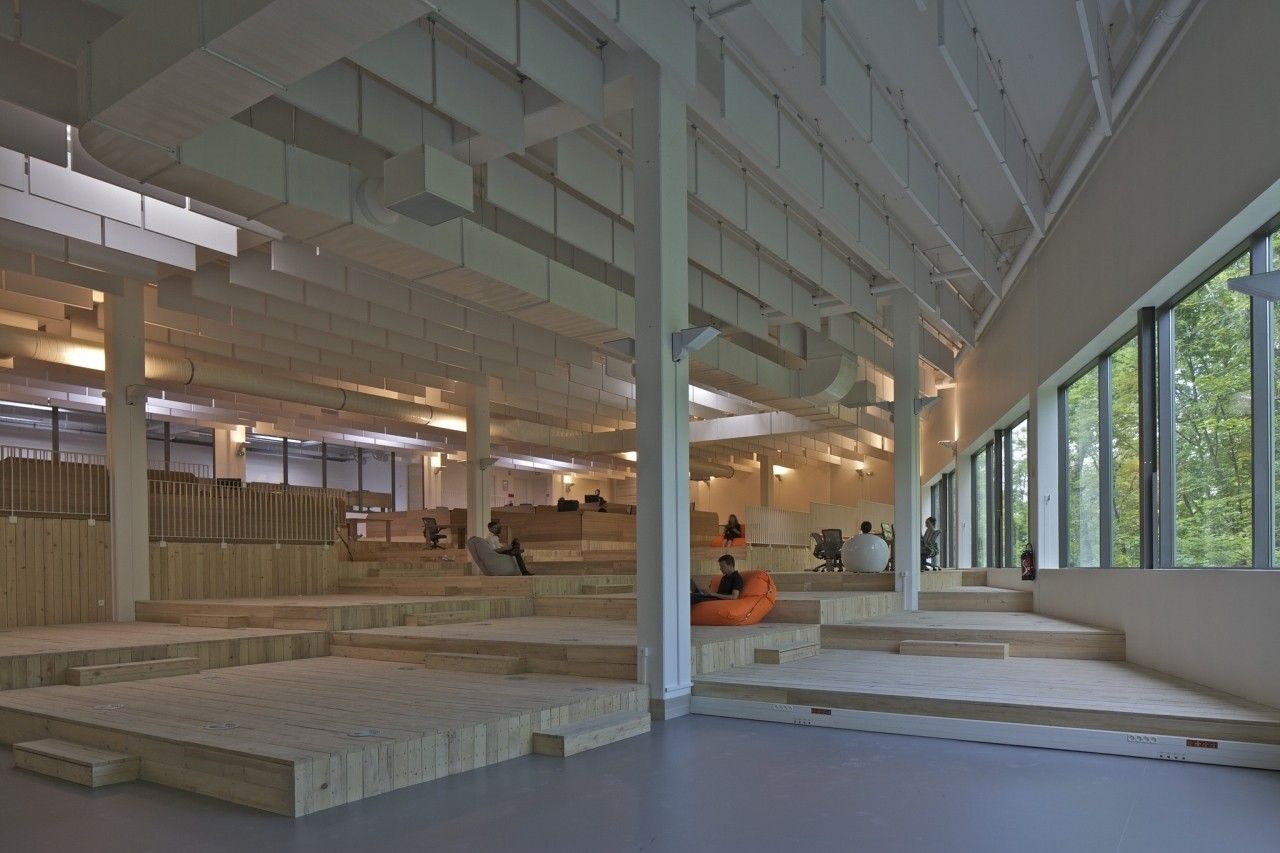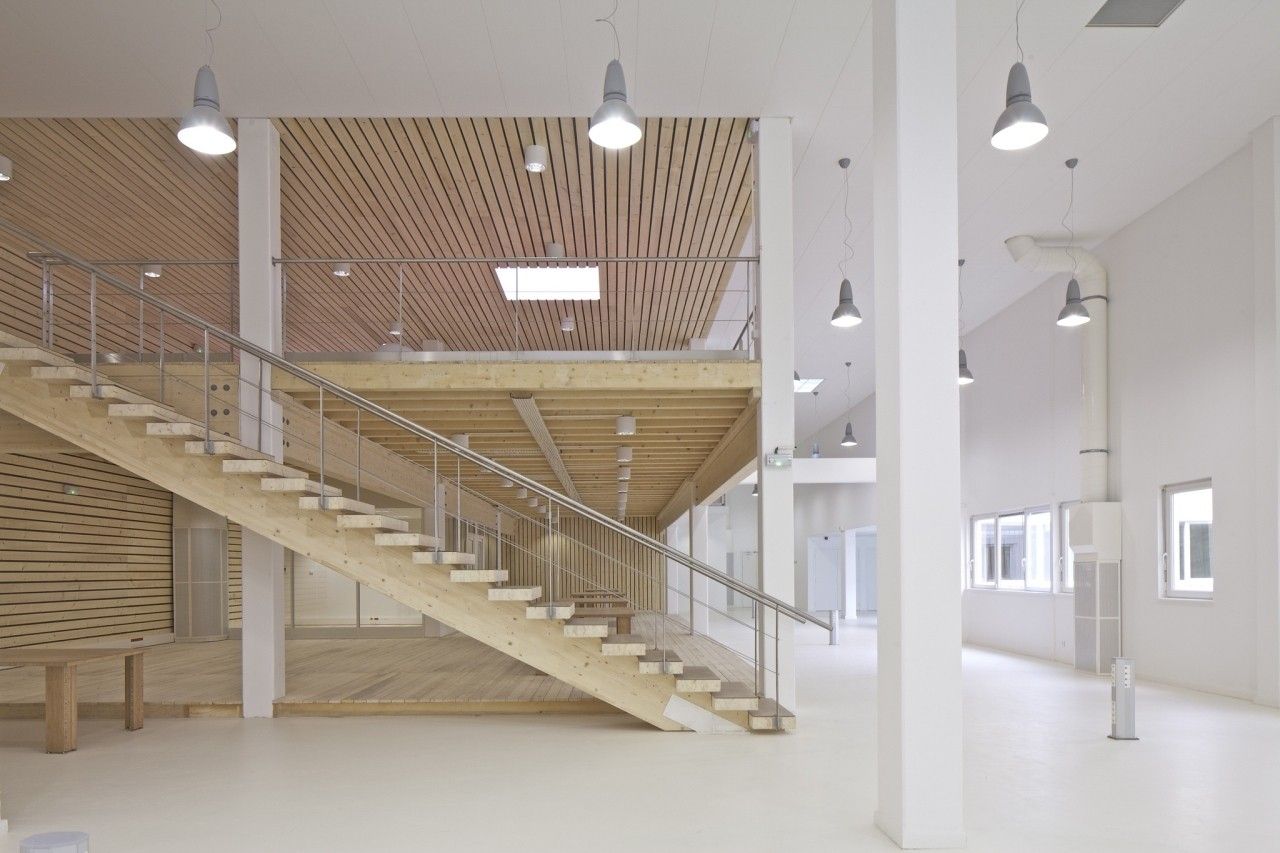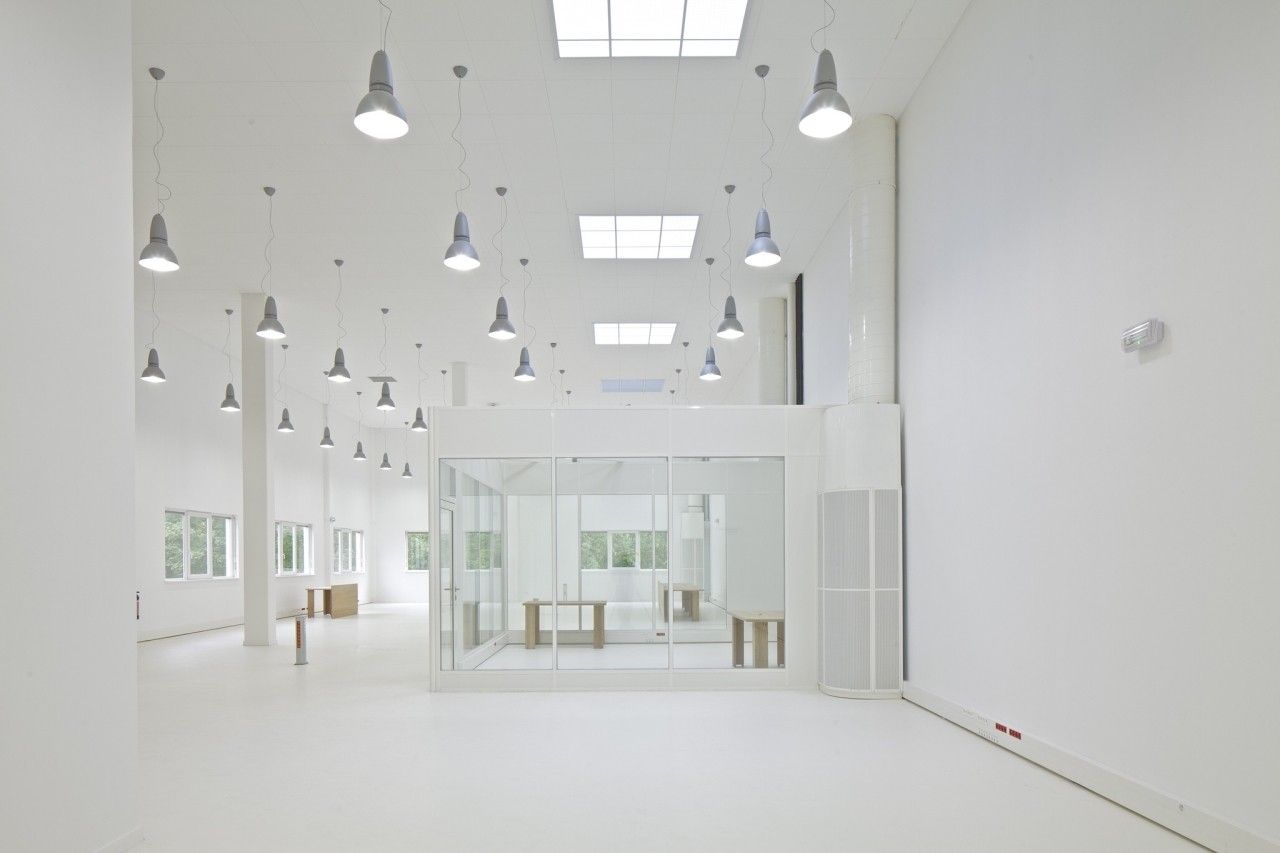Teletech Call Center
Is Europe invasioned from empty buildings and without a concrete purpose? Transformations are usually centered around the preservation of historically or architecturally significant parts of a building. The building is the former Unilever Amora Dijon mustard laboratory completed in 2004 and closed only five years later in 2009. It was in a good state but due to its wide volume, it was not suitable for traditional work spaces. The construction budget was too low to replace the façade or make serious alterations to the structure. And this is the essence of the project: A fine balance between intervention and intelligent re-use of the existing.
The Teletech Call Center has rush hours in the morning, afternoon and early evening, and only at these times is the building fully occupied by its workforce. For these short periods, non-traditional work places can be used which would not be suitable for eight hour shifts. The interior of the building is turned into a working landscape providing flexible spaces for 600 young call center operators: they can log in anywhere they want inside landscape and get to work. Different qualities such as open, secluded or even silent places are on offer. The way young people often work, with a laptop on the sofa or bed, was part of the inspiration for the interior design: the space needs to appeal to the operators, and allow them to work in the way they like. It is informally furnished with homely objects to provide a fun and creative working environment.
During the other times of the day, the operators have free time when they can use the education center, fitness center, a gallery and a project incubator. The facade could not be replaced due to the budget, so MVRDV put an identity to the building. He printed a QR code relating to the activities of the company, acting as communicative tool and signalling the building’s transformation. The result is an exciting work space that radically contradicts the usual call center which is often a monotonous grid of standard office cubicles.
MVRDV says, “This transformation is an exemplary project for contemporary European architecture in times of the current crisis. How to reuse a building which is structurally in a good shape but not suitable for a traditional transformation and use? The more reuse of the existing possible the more the budget becomes liberated for positive interventions. The unusual building evokes an unusual use and in the end will adjust perfectly to the Teletech work rhythm. The budget makes literal reuse necessary and leads to less replacements and a better sustainable profile of the transformation act“.
Project Information :
Architect : MVRDV
Location : Dijon, France
Project Year : 2010-2012
Project Area : 6000 square meters
Design Team : Winy Maas, Jacob van Rijs and Nathalie de Vries with Fokke Moerel, Bertrand Schippan, Catherine Drieux, Rune Veile, Macieje Zawadzki and David Sebastian
Co-Architect : Arkos Concepteurs Associés, Dijon
Courtesy of MVRDV
Courtesy of MVRDV
Courtesy of MVRDV
Courtesy of MVRDV
Courtesy of MVRDV
Courtesy of MVRDV
Courtesy of MVRDV
Courtesy of MVRDV
Courtesy of MVRDV


